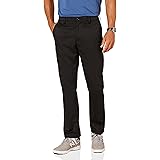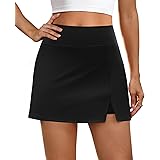Mastering the Golf Backswing: The Key to a Perfect Right Arm Fold
Many golfers seek to refine their golf backswing. Achieving consistency often starts here. A proper right arm fold is essential. It contributes greatly to a powerful swing. The video above demonstrates a unique drill. It helps improve this critical motion. This article expands on those concepts. It offers deeper insights for your game.
Golfers frequently struggle with arm mechanics. The right arm often fails to fold correctly. This issue can plague the backswing. It impacts power and accuracy. Imagine losing clubhead speed. This results from an inefficient arm position. Such struggles are common. They prevent many from reaching their full potential.
Understanding the Right-Side Swing Principle
The term “right-side swing” is often discussed. It emphasizes the feeling of the right side. This side works actively during the swing. It is not about overpowering with the right arm. Instead, it involves efficient movement. The right arm folds. The body rotates. This creates a powerful coil. It prepares for the downswing.
This approach contrasts with left-side dominance. Some golfers push with their left side. This can restrict the backswing. It often leads to a narrower arc. A proper right-side feel creates width. It allows the club to stay on plane. This contributes to better control. It also enhances swing speed.
Common Challenges in Folding the Right Arm
Folding the right arm quickly is not always intuitive. Many golfers over-extend their arms. They lose the crucial width. This often results in a “flying elbow.” Such a position compromises the swing plane. It makes consistent contact difficult. This loss of structure is a major hurdle.
Other issues arise. Some golfers restrict arm movement. This happens unintentionally. They may try to keep the arm straight. This limits body rotation. It reduces potential power. The lack of a proper right arm fold affects timing. It causes compensations elsewhere. These problems are addressed through specific drills.
The “Sleeve” Drill: A Foundational Backswing Drill
The video introduces an effective drill. It focuses on the right arm fold. This drill uses a visual aid. Imagine your left arm is an empty sleeve. It has no independent movement. It is simply pulled along. The left arm becomes completely passive. This creates a unique sensation.
Your right hand holds the club. It controls the backswing. The right arm then folds quickly. This movement is primary. The “sleeve” feels like it is being pulled. It remains close to your body. This drill helps isolate the right arm’s action. It promotes a connected feeling. This is a critical component of a strong backswing.
This drill helps correct bad habits. It minimizes independent left arm action. The left arm is simply carried. This encourages a fuller body turn. The focus remains on the right arm. It learns to fold efficiently. This creates a solid base for your backswing. Consistent repetition builds new muscle memory.
Achieving an Optimal Swing Radius for Power
An “appropriate radius” is vital in golf. It refers to the width of your swing arc. A wide arc generates more power. It also improves club path consistency. When the right arm folds correctly, this radius is maintained. The clubhead travels on a better path. This leads to solid ball striking.
A narrow radius limits power. It happens when arms collapse too quickly. The club gets too close to the body. This reduces leverage. Imagine swinging a shorter lever. It would generate less force. The right arm fold drill helps prevent this collapse. It ensures a stable, wide arc. This translates to increased clubhead speed.
Maintaining radius also influences the swing plane. A consistent radius helps keep the club on plane. This is important for accuracy. The drill encourages a wide, yet controlled, backswing. This sets up a better transition. It promotes a more natural downswing path. Accuracy and power are both improved.
Integrating the Feeling into Your Full Swing
The drill offers a specific feeling. It is about the right arm’s role. This feeling must be integrated. It should transition to your full swing. Practice the drill repeatedly. Let the sensation become familiar. Then, slowly add your full body turn. Maintain the passive left arm. Focus on the quick right arm fold.
This is not about hitting with only the right arm. It is about the *feeling* of the right arm initiating. It supports the backswing coil. The left arm will naturally follow. It will remain connected. The drill helps distinguish feeling from instruction. It guides your body towards better mechanics. Trust the process and the feeling.
Start with half swings. Gradually increase swing length. Continue to emphasize the right arm’s fold. Ensure the left arm remains passive. This build-up helps reinforce the learned motion. It prevents old habits from returning. Consistent practice embeds the new motor pattern. Your swing will become more fluid.
Benefits of a Refined Right Arm Fold
Mastering the right arm fold offers many benefits. Increased clubhead speed is a primary advantage. A wider, more efficient backswing generates momentum. This translates directly to power. You will hit the ball further. Your shots will carry greater distance.
Consistent ball striking is another gain. The proper radius improves the club path. The club meets the ball more squarely. This reduces mis-hits. It leads to more accurate shots. Your consistency will dramatically improve. Golf becomes a much more enjoyable game.
Improved swing plane also results. A correct backswing sets up the downswing. The club stays on plane. This promotes a more repeatable swing. It reduces slice or hook tendencies. Golfers find greater control over their shots. This makes course management easier.
Refining Your Overall Backswing Mechanics
The right arm fold is one piece. It fits into the larger backswing puzzle. Body rotation is equally important. Your shoulders and hips should turn. They should work in harmony with your arms. This creates a powerful coil. The coil stores energy for impact.
Wrist hinge also plays a role. The wrists hinge naturally. They support the club’s position. This adds to clubhead speed. The right arm fold helps sequence these elements. It encourages proper timing. All components work together efficiently. This results in a truly dynamic golf backswing.










